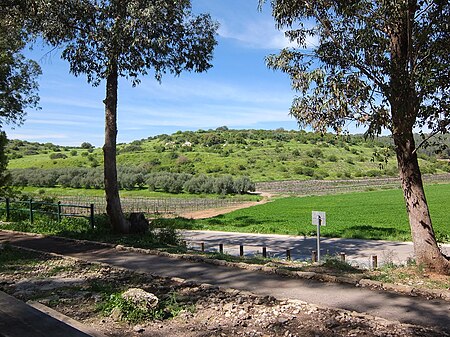Judea

Judea or Judaea (; Hebrew: יהודה, Modern: Yəhūda, Tiberian: Yehūḏā; Greek: Ἰουδαία, Ioudaía; Latin: Iudaea) is a mountainous region of the Levant. Traditionally dominated by the city of Jerusalem, it is now part of Palestine and Israel. The name's usage is historic, having been used in antiquity and still into the present day; it originates from Yehudah, a Hebrew name. Yehudah was a son of Jacob, who was later given the name "Israel" and whose sons collectively headed the Twelve Tribes of Israel. Yehudah's progeny among the Israelites formed the Tribe of Judah, with whom the Kingdom of Judah is associated. Related nomenclature continued to be used under the rule of the Babylonians (the Yehud province), the Persians (the Yehud province), the Greeks (the Hasmonean Kingdom), and the Romans (the Herodian Kingdom and the Judaea province). Under the Hasmoneans, the Herodians, and the Romans, the term was applied to an area larger than the historical region of Judea. In 132 CE, the Roman province of Judaea was merged with Galilee to form the enlarged province of Syria Palaestina.The term Judea was revived by the Israeli government in the 20th century, as part of the Israeli administrative district name "Judea and Samaria Area" for the territory that is generally referred to as the West Bank.
Excerpt from the Wikipedia article Judea (License: CC BY-SA 3.0, Authors, Images).Judea
Mate Yehuda Regional Council
Geographical coordinates (GPS) Address Nearby Places Show on map
Geographical coordinates (GPS)
| Latitude | Longitude |
|---|---|
| N 31.666666666667 ° | E 35 ° |
Address
9965217 Mate Yehuda Regional Council
Jerusalem District, Israel
Open on Google Maps











